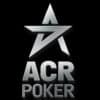Becoming proficient in hand reading skills is crucial for any poker player. By accurately analyzing your opponents’ hands, you can make informed decisions and gain an edge at the table. In this step-by-step guide, I will provide you with the necessary knowledge and techniques to develop your hand reading skills from beginner to advanced level.

1. Understanding Hand Reading in Texas Hold’em
Hand reading is the process of deducing the likely range of hands that your opponents hold based on their actions and the community cards. In Texas Hold’em, this skill is particularly important due to the hidden nature of the hole cards.
Hand ranges are the possible combinations of hands that your opponents could have at any given moment. Understanding hand ranges allows you to make more accurate predictions about your opponents’ holdings.
For example, a tight player who only plays premium hands will have a narrow hand range, while a loose player who plays a wide variety of hands will have a much wider range.
2. Poker Hand Reading Techniques
There are several techniques you can use to improve your hand-reading skills:
- Observation: Pay close attention to your opponent’s actions, betting patterns, and physical tells.
- Note-taking: Keep track of your opponent’s tendencies and hand ranges throughout the game.
- Player profiling: Analyze your opponents’ playing styles and adjust your hand reading accordingly.
By observing betting patterns, you can gain valuable insights into your opponents’ hand strength. For example, a large bet on the river may indicate a strong hand, while a small bet may suggest a weaker hand or a bluff.
3. Advanced Hand Reading Concepts
As you progress in your hand reading skills, it’s essential to incorporate advanced concepts into your analysis:
- Equity: Consider the equity of your hand and the potential equity of your opponents’ hands.
- Pot odds: Evaluate the pot odds to determine whether a call is profitable in the long run.
- Implied odds: Take into account the potential future bets you can win if you hit your hand.
By incorporating these concepts into your hand reading analysis, you can make more informed decisions and maximize your profitability.
4. Developing Hand Reading Skills
To develop your hand reading skills, follow these step-by-step guidelines:
- Start by focusing on your hand range and understanding its strength. This will help you make better decisions based on your own holdings.
- Gradually expand your hand reading skills by considering the possible hand ranges of your opponents. Please pay attention to their actions and adjust your analysis accordingly.
- Practice analyzing different scenarios and making hand reading decisions. This can be done through hand history reviews or simulated hand reading exercises.
- Seek feedback from experienced players and learn from their insights. Join hand-reading discussions and forums to gain valuable knowledge.
- Continuously review and refine your hand reading skills through self-reflection and analysis. Keep track of your progress and identify areas for improvement.
5. Analyzing the Opponent’s Hand Range
When analyzing an opponent’s hand range, consider their actions and the community cards on the board. The board texture and possible combinations of hands play a crucial role in narrowing down their range.
For example, if the board is showing three hearts and your opponent bets aggressively, they likely have a flush draw or a made flush. By deductive reasoning, you can eliminate hands that don’t fit this range.
6. Hand Reading Tips for Beginners
Here are some practical tips to improve your hand reading skills as a beginner:
- Pay attention to the action at the table and note players’ tendencies. This will help you build a database of information to refer to in future hands.
- Practice hand reading exercises and analyze the outcomes. This can be done through online resources or by playing simulated hand reading scenarios.
- Study hand histories and learn from experienced players’ thought processes. Understand the reasoning behind their hand-reading decisions.
- Utilize online resources and training materials to enhance your hand reading knowledge. There are numerous articles, videos, and forums dedicated to hand reading strategies.
7. Improving Hand Reading Accuracy
To improve your hand reading accuracy, consider the following strategies:
- Focus on gathering more information before making hand reading decisions. Take into account stack sizes, position, and previous actions.
- Use logical reasoning and eliminate unlikely hand combinations. Consider the likelihood of your opponents holding certain hands based on the available information.
- Continuously practice and refine your hand reading skills through active learning. Actively seek opportunities to analyze hands and make predictions.
8. Mastering Hand Reading in Poker
Mastering hand reading skills requires experience and practice. It’s important to understand that it takes time to develop expertise in this area.
Patience and perseverance are key. Continuously challenge yourself to improve and learn from your mistakes. Over time, you will become more proficient in reading your opponents’ hands.
Professional poker players known for exceptional hand reading abilities include Phil Ivey, Daniel Negreanu, and Fedor Holz.
9. Effective Hand Reading Strategies
Here are some effective strategies to employ during hand reading:
- Consider the range of hands that your opponents are likely to play in different positions. Please take into account their playing style and tendencies.
- Please pay attention to bet sizing and its implications on hand strength. A large bet may indicate a strong hand, while a small bet may suggest a weaker hand or a bluff.
- Use blockers to narrow down opponents’ possible hand ranges. If you hold a card that makes it less likely for your opponent to have a certain hand, it can help you make more accurate predictions.
- Continuously adapt and adjust your hand-reading strategies based on changing dynamics at the table. Be flexible and open to new information.
10. Hand Reading Exercises for Beginners
Here are some hand reading exercises for beginners to practice and improve their skills:
- Analyze hand histories and try to determine opponents’ likely hand ranges. Look for patterns and tendencies.
- Play simulated hand-reading scenarios online or with friends. This allows you to practice in a risk-free environment.
- Participate in hand reading discussions and forums to gain insights from other players. Share your thoughts and learn from different perspectives.
- Seek feedback from experienced players on your hand reading decisions. They can provide valuable guidance and help you identify areas for improvement.
Frequently Asked Questions (FAQ)
1. How long does it take to develop strong hand reading skills in poker?
The time it takes to develop strong hand reading skills varies from person to person. It depends on factors such as the amount of time dedicated to practice, the quality of resources utilized, and the individual’s ability to apply the concepts effectively. With consistent practice and study, significant improvements can be made within a few months.
2. Can hand reading skills be applied in other poker variants besides Texas Hold’em?
Yes, hand-reading skills are applicable to other poker variants as well. While the specific hand ranges and strategies may differ, the fundamental concept of analyzing opponents’ hands based on their actions and the community cards remains the same.
3. Are there any specific hand reading tools or software available for beginners?
There are several hand-reading tools and software available that can assist beginners in their learning process. These tools provide hand range charts, hand history analysis, and other features to enhance hand reading skills. Some popular options include PokerTracker, Holdem Manager, and Equilab.
4. How can I improve my ability to detect physical tells in live poker games?
Improving your ability to detect physical tells in live poker games requires observation and practice. Pay close attention to your opponent’s body language, facial expressions, and betting patterns. Look for consistent patterns and deviations from their baseline behavior. Additionally, studying books and resources on poker tells can provide valuable insights.
5. What are some common mistakes beginners make when trying to read hands?
Some common mistakes beginners make when trying to read hands include overestimating the strength of their own hand, failing to consider the range of hands their opponents could have, and relying too heavily on physical tells. It’s important to approach hand reading with a logical and analytical mindset, considering all available information and making informed decisions.


















